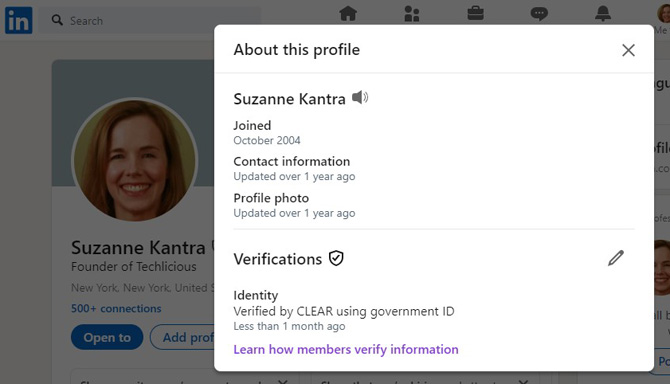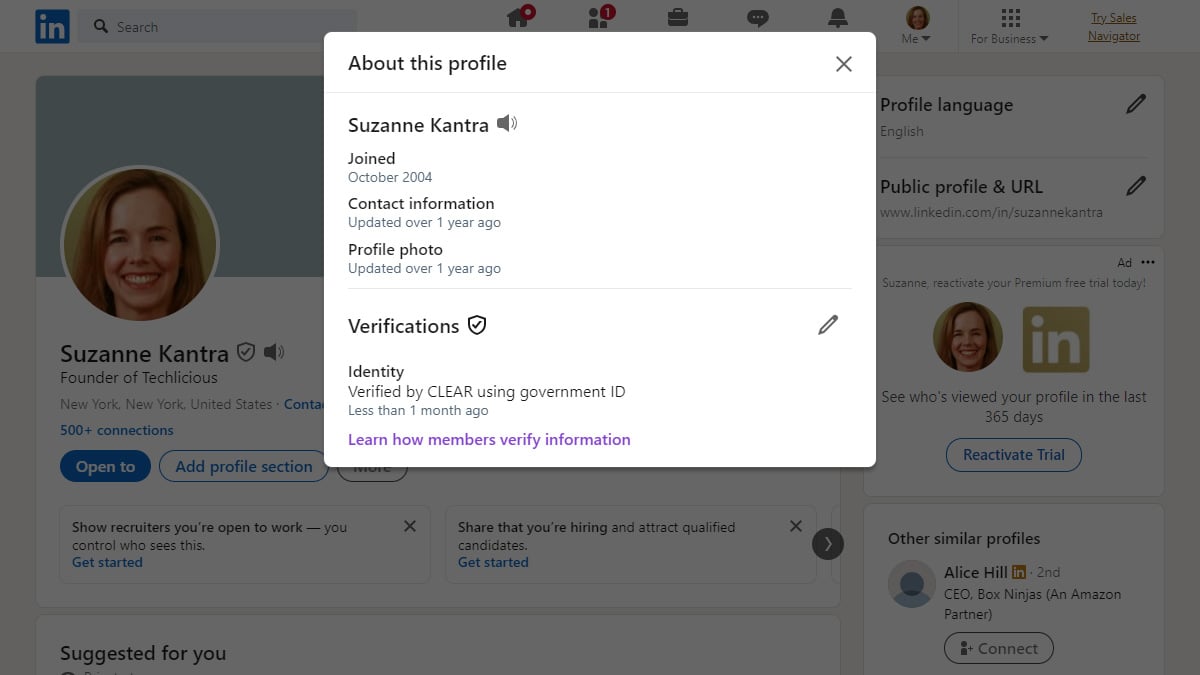With more than 900 million users worldwide, LinkedIn is an essential professional networking tool. Establishing a strong online presence that projects credibility and trustworthiness is paramount. One powerful tool to achieve this on LinkedIn is account verification. This feature allows you to validate your identity and critical profile information, setting you apart in a sea of online profiles.

The advantages of verification
The main advantage of a verified LinkedIn profile is that it eliminates any doubts about your identity and the accuracy of the information you share. This is vital when forging new connections or building relationships with potential employers or clients.
However, that’s not the only benefit. LinkedIn has confirmed that its algorithm prioritizes verified profiles in search results. This translates into increased exposure to people seeking individuals with your skills and qualifications.
Read more: How to Add a Resume to Your LinkedIn Profile
The disadvantages of verification
I spoke with Maggie Mistal, Life Purpose Career and Executive Coach, about profile verification, and she’s not excited about it. She’s concerned that it won’t incentivize the right behaviors for using LinkedIn successfully. For optimal identity verification and getting noticed on LinkedIn, she recommends maintaining a robust and active profile.
Simple elements are key: a professional photo, a compelling headline, and a summary outlining your experience and goals. Additionally, staying active demonstrates your expertise – post accomplishments, support others, and comment thoughtfully on relevant posts. Finally, don’t underestimate the power of recommendations. ‘Having another person endorse your specific skills provides valuable career feedback,’ she emphasizes.”
Getting LinkedIn verification
LinkedIn verification lets you confirm your identity along with certain aspects of your profile so people browsing your profile will know your account is authentic. This type of verification is especially important for people who are just starting out and can’t show their identity in the way that Mistal advocates.
There are three main verification types:
Identity verification
You must provide LinkedIn’s verification partner with a government-issued ID to confirm your identity. In the U.S., Canada, or Mexico, that’s CLEAR, and for other countries, it’s Persona. If you’re concerned about sharing your data with CLEAR or Persona, this is a non-starter, but if you’ve already verified your identity with LinkedIn’s partner, there are a few additional risks.
When I verified my identity, it was simple because I already had a CLEAR account. I logged into my account and connected it to my LinkedIn profile. If you don’t have a CLEAR account, you can create a free account.
Workplace verification
If you’re still at a company, you can use your work email address for verification. Another method, if your employer supports it, is to use your Microsoft Entra Verified ID.
Educational institution verification
To verify your listed university or school, you need a current, valid email address issued by the institution. LinkedIn is currently working with select educational institutions but has plans to expand.
Upon successful verification, a small badge will appear on your profile.
Read more: Visit a LinkedIn Profile without Them Knowing Using Private Mode
Final thoughts
Account verification on LinkedIn is an excellent way to boost your professional reputation, rise above the competition, and expand your network with confidence. It’s a simple, worthwhile step that can significantly enhance your LinkedIn experience.
[Image credit: Screenshot via Techlicious]
For the past 20+ years, Techlicious founder Suzanne Kantra has been exploring and writing about the world’s most exciting and important science and technology issues. Prior to Techlicious, Suzanne was the Technology Editor for Martha Stewart Living Omnimedia and the Senior Technology Editor for Popular Science. Suzanne has been featured on CNN, CBS, and NBC.







